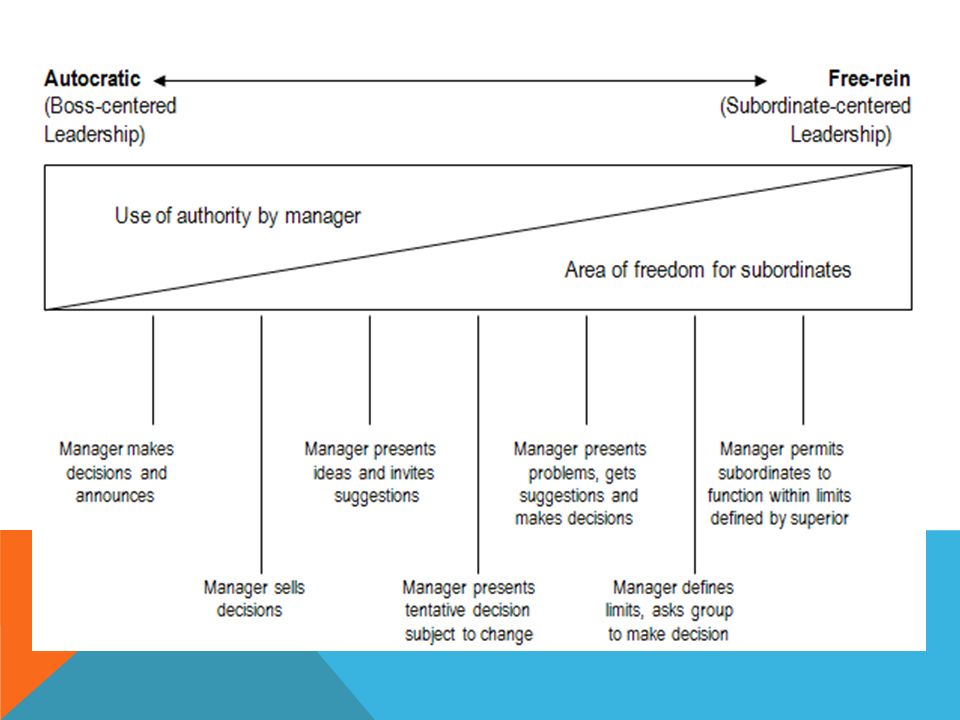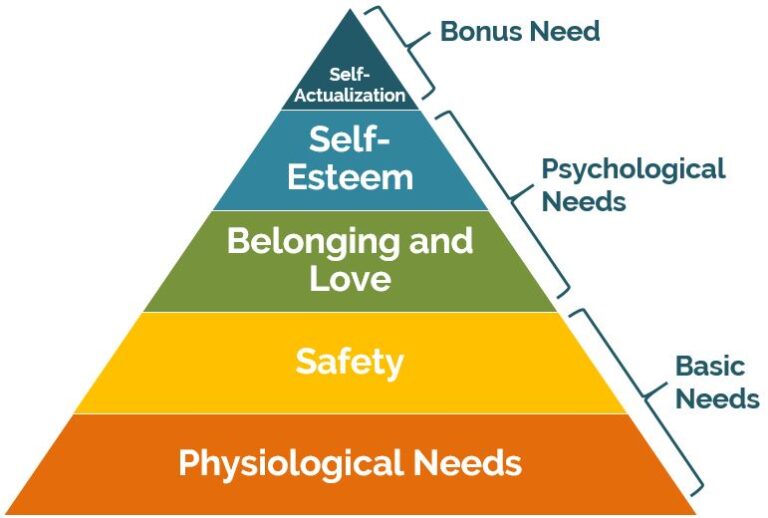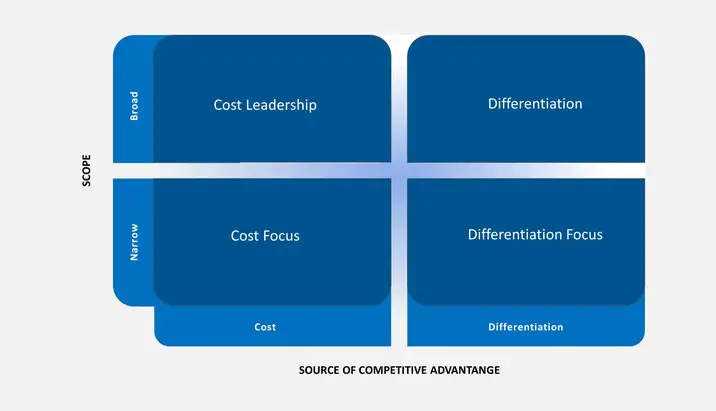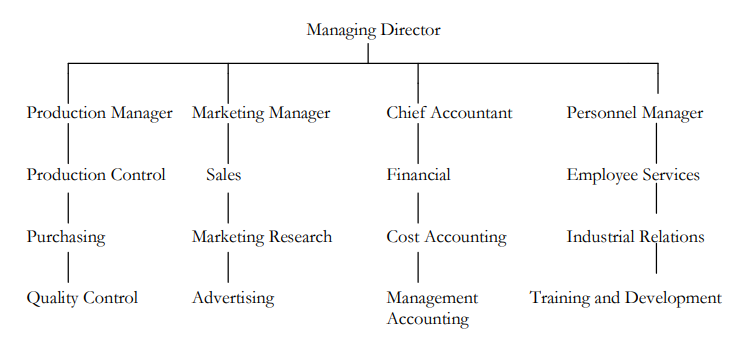Tannenbaum and Schmidt Leadership Continuum | Leadership Continuum Theory
What is the Tannenbaum and Schmidt continuum?
Contingency theorists Robert Tannenbaum and Warren Schmidt introduced the continuum of leadership behavior, 1958 in the article How to Choose a Leadership Pattern, Published in Harvard Business Review. The Tannenbaum and Schmidt Continuum is a simple leadership theory model that shows the relationship between the level of freedom that a manager chooses to give to a team on the manager’s level of authority.
The model addresses the problem of how modern managers can be democratic in their relationships with subordinates and at the same time maintain the necessary authority and control in the organizations for which they are responsible. They run in a continuum, from the rigid authority at one end through to full freedom for your team at the other.
The leader that suggests outlines the decision includes a rationale and asks if team members have any questions. The Tannenbaum and Schmidt continuum of leadership behavior is often shown as a simple graph.
Leadership Continuum Theory Model.
The model goes from boss-centric leadership, where it is all about the manager’s use of authority, to subordinate-centered leadership, where subordinates’ freedom takes up most of the area, sometimes also called employees or non-managers.
The Tannenbaum and Schmidt continuum can be related to McGregor’s theory X and theory Y; both centered leadership is similar to theory X, and subordinate centered leadership relates more to theory Y.
Tannenbaum and Schmidt identified a continuum of seven distinct leadership styles. Each type of style is related to the degree of authority used by the boss and the amount of freedom available to subordinates in reaching decisions.
By understanding this continuum, you can see some of the options available to you, and these help you think about which leadership style is most appropriate in a given situation.
Tannenbaum and Schmidt Continuum of Leadership Behaviours
Here are the seven Tannenbaum and Schmidt continuum of Leadership Behaviours;
- Tell
- Sell
- Suggest
- Consult
- Join
- Delegate
- Abdicate
Tannenbaum and Schmidt Model of Leadership Diagram
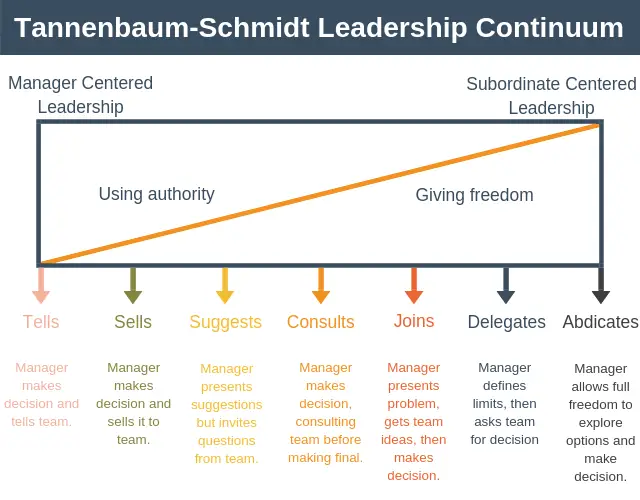
1. Tell
The manager makes the decision and announces it.
💥🎁 New Year & Easter Deals On Amazon !
Don't miss out on the best discounts and top-rated products available right now!
🛒 Shop Now and Save Big Today!*As an Amazon Associate, I earn from qualifying purchases.
In this case, the boss identifies a problem, considers alternative solutions, chooses one of them, and then announces this decision to the subordinates for implementation. None of the employees are consulted. It is an order.
2. Sells
At this level, the manager sells the decision.
The manager takes responsibility for identifying the problem and arriving at a decision, but rather than simply announcing it. The manager takes the additional step of persuading the subordinates to accept it.
The manager seeks to reduce resistance from the employees by telling them what’s in it for you.
3. Suggest
The manager presents ideas and invites questions.
The employees can then better understand what the manager is trying to accomplish.
This gives and takes also enables the manager to explore the implications of the decision more fully.
This may sometimes affect the manager’s ideas, but the employees have very little influence and the final decision,
4. Consult
The manager presents a tentative decision subject to change before finalizing it.
The manager presents the proposed solution for the reaction of those who will be affected by it. The manager can say something like; I’d like to hear what you have to say about this plan that I have developed. I’ll appreciate your frank reactions, but we’ll reserve for myself the final decision.
💥🎁 New Year & Easter Deals On Amazon !
Don't miss out on the best discounts and top-rated products available right now!
🛒 Shop Now and Save Big Today!*As an Amazon Associate, I earn from qualifying purchases.
You could say he consults his employees. This kind of behavior permits the employees to exert some influence on the decision.
5. Join
The manager presents the problem, get suggestions, and then makes the decision.
Up to this point, the boss has come before the group with a solution of his or her own. Not so in this case, the subordinates now get the first chance to suggest solutions. The manager’s initial role involves identifying the problem.
He or she might, for example, say something of this sort. We are faced with several complaints from newspapers on the general public concerning our service policy what is wrong here. What ideas do you have for getting to grips with this problem?
The purpose is to capitalize on the knowledge and experience of those who are on the firing line from the expanded list of alternatives developed by the manager and the subordinates. The manager then selects the solution that he or she regards as most promising.
6. Delegate
The manager defines the limits on asked the group to make a decision.
At this point, the manager delegates to the group the right to make decisions. However, before doing so, they define the problem to be solved on the boundaries within which the decision must be made.
An example might be the handling of a parking problem at a plant. The boss decides that this is something that should be worked on by the people involved.
The boss tells the people. There is an open field just north of the plant, which has been designated for additional employee parking. We can build underground or surface multilevel facilities as long as the cost does not exceed a million dollars.
Within these limits, we are free to work out whatever solution makes sense to us. After deciding on a specific plan, the company will spend the available money in whatever way we indicate. The decision is a joint effort within the boundaries defined by the manager.
💥🎁 New Year & Easter Deals On Amazon !
Don't miss out on the best discounts and top-rated products available right now!
🛒 Shop Now and Save Big Today!*As an Amazon Associate, I earn from qualifying purchases.
7. Abdicate
The manager permits the group to make decisions within prescribed limits.
The manager abdicates the decision power to the group. This represents an extreme degree of group freedom, only occasionally encountered informal organizations as, for instance, in many research groups.
Factors in Leadership Continuum Tannenbaum and Schmidt
Boss Centered Leadership Style and Subordinates Centered Leadership
Types of leadership are possible in a company situation to the question of what types are practical and desirable. Three factors are of particular importance when a manager considers how to manage. These are;
- Forces in Him or Herself As The Manager
- Forces in The Subordinates
- Forces in The Situation.
The strength of each of these three factors will, of course, vary from instance to instance. Still, managers who are sensitive to them can better assess the problems that face them and determine which leadership behavior model is most appropriate for them.
Forces in The Manager
In any given instance, the manager’s behavior will be influenced greatly by the many forces operating within their personality.
Value system
Among the important internal forces affecting managers is their value system.
If a manager feels that individuals should have a share in making decisions that affect them, they move towards subordinates-centered leadership.
But if the manager is convinced that the official who is paid to assume responsibility should personally carry the burden of decision making, then he or she moves towards boss centered leadership managers.
Confidence in Subordinates
Confidence in subordinates affects their leadership style. Managers differ greatly in the amount of trust they have in other people generally, and this carries over to the particular employees they supervisor at a given time.
The manager moves towards subordinates centered leadership when he trusts his employees and towards boss centered leadership if he doesn’t
💥🎁 New Year & Easter Deals On Amazon !
Don't miss out on the best discounts and top-rated products available right now!
🛒 Shop Now and Save Big Today!*As an Amazon Associate, I earn from qualifying purchases.
The Leadership Inclination
The manager’s own leadership inclination affects the leadership style.
Some managers function more comfortably and naturally as highly directive leaders. They moved towards the boss centered leadership style.
Other managers seem to operate more comfortably in a team role, where they are continually sharing many of their functions with their subordinates. They move towards subordinate centered leadership,
Feelings of Security
The manager’s feelings of security in an uncertain situation.Managers who released control over the decision-making process thereby reduce the predictability of the outcome.
Some managers have a greater need than others for predictability and stability in their environment. These managers moved towards boss centered leadership.
Those managers who don’t need the same predictability and stability move towards subordinates centered leadership.
Managers bring these and other highly personal variables to each situation they face. If they can see them as forces that influence their behavior, they can better understand what makes them prefer to act in a given way. And understanding this, they can often make themselves more effective.
Forces in The Subordinates
Before deciding how to lead a certain group, managers will also want to consider a number of forces affecting their subordinate’s behavior.
They will want to remember that each employee, like themselves, is influenced by many personality variables. Besides, each subordinate has a set of expectations about how the boss should act in relation to him or her.
The better managers understand these factors, the more accurately they can determine what kind of behavior on their part will enable subordinates to act most effectively.
💥🎁 New Year & Easter Deals On Amazon !
Don't miss out on the best discounts and top-rated products available right now!
🛒 Shop Now and Save Big Today!*As an Amazon Associate, I earn from qualifying purchases.
Permit Greater Freedom
Generally speaking, managers can permit subordinates greater freedom if the following essential conditions exist.
- If the subordinates have relatively high needs for independence.
- If these subordinates have a readiness to assume responsibility for decision making. Some see additional responsibility as a tribute to their ability. Others see it is passing the buck
- if they have a relatively high tolerance for ambiguity. Some employees prefer to have clear-cut directives given to them. Others prefer a wider area of freedom
- if they are interested in the problem and feel that it is important
- if they understand and identify with the goals of the organization
- if they have the necessary knowledge and experience to deal with the problem.
- If they have learned to expect to share in decision making.
Those who have come to expect strong leadership and are then suddenly confronted with a request to share more fully in decision making are often upset by this new experience.
On the other hand, employees who have enjoyed a considerable amount of freedom resent bosses who begin to make all their decisions.
Managers will probably tend to make fuller use of their own authority if the above conditions do not exist. At times, there may be no realistic alternative to running a one-man show. We end up in the field use of authority by the manager.
Forces in The Situation.
Besides, to the forces which exist in managers themselves on din the subordinates. Certain characteristics of the general situation will also affect the manager’s behavior.
Types of Organization
Like individuals, organizations have values and traditions that inevitably influence the behavior of the people who work.
Managers who are newcomers to accompany quickly discover that certain kinds of behavior are approved off, while others are not.
They also discover that to deviate radically from what is generally accepted as likely to create problems for themselves.
Group Effectiveness
Before turning decision making responsibility over to a subordinate group, the ball should consider how effectively its members work together as a unit.
One of the relevant factors here is the experience the group has had in working together. It can generally be expected that a group that has functioned for some time will have developed habits of cooperation and thus be able to tackle a problem more effectively than a new group.
💥🎁 New Year & Easter Deals On Amazon !
Don't miss out on the best discounts and top-rated products available right now!
🛒 Shop Now and Save Big Today!*As an Amazon Associate, I earn from qualifying purchases.
The degree of confidence that the members have in their ability to solve problems as a group is also a key consideration.
Problem Itself
The problem may determine what degree of authority should be delegated by managers to their subordinates.
Obviously, managers will ask themselves whether subordinates have the kind of knowledge which is needed.
It is possible to do them a real disservice by assigning a problem to them that their experience does not equip them to handle.
The Pressure of Time
This is perhaps the most clearly felt pressure on managers. The more that they feel the need for an immediate decision, the more difficult it is to involve other people.
In organizations that are in a constant state of crisis, one is likely to find managers personally using a high degree of authority with relatively little delegation to subordinates.
When the time pressure is less intense, however, it becomes much more possible to bring subordinates in on the decision-making process.
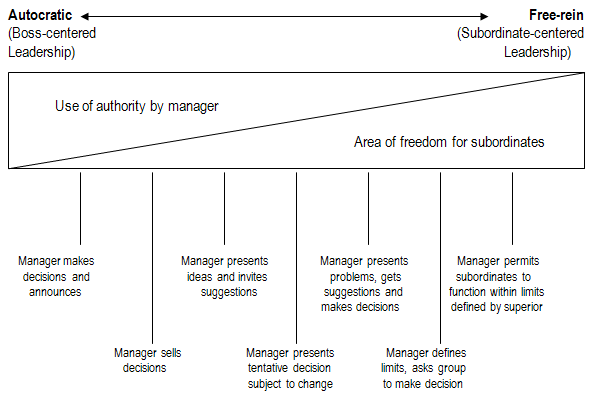
Long Run Strategy
Forces in the manager, in the subordinates, and the situation are the principal forces that impinge on managers in any given instance and tend to determine their tactical behavior in relation to subordinates.
In each case, their behavior will ideally be that which makes the most effective attainment of their immediate goals within limits facing them.
💥🎁 New Year & Easter Deals On Amazon !
Don't miss out on the best discounts and top-rated products available right now!
🛒 Shop Now and Save Big Today!*As an Amazon Associate, I earn from qualifying purchases.
As managers work with their organizations on the problems that come up day to day, their leadership pattern choice is usually limited. Still, as they look ahead months or even years, they can shift their thinking from tactics to large scale strategy.
Managers are now faced with the challenging question; At which point along the continuum should they act?
The answer depends on what they wanted to accomplish.
Let us suppose that they are interested in the same objectives that most modern managers seek to attain.
They want to raise the level of employee motivation, increase subordinates’ readiness to accept change, improve the quality of all managerial decisions, develop teamwork and morale, and further the individual development of employees.
Most research and much experience of recent years give a strong factual basis to the theory that a fairly high degree of subordinate center behavior is associated with accomplishing the goals that modern managers seek to attain.
As a modern manager, you must therefore strive to give employees freedom with responsibility, but within limits specified in the model.
Leadership Continuum Advantages and Disadvantages/Criticism
- The model does not discuss how employees perceive the different leadership styles. Leadership style six and seven can be perceived as laissez-faire.
- From the employee’s perspective, Cultural differences between employees from different backgrounds or countries and their leadership perception are not discussed in the model.
- How is it perceived when you call the staff, employees, subordinates, or even non-managers not discussed in the model?
- It is anticipated that the manager can switch between all seven types of leadership styles. This is an unrealistic assumption.
By understanding the different aspects of the model, the manager can better understand their choice among different leadership styles in different situations and thereby make themselves more effective.
💥🎁 New Year & Easter Deals On Amazon !
Don't miss out on the best discounts and top-rated products available right now!
🛒 Shop Now and Save Big Today!*As an Amazon Associate, I earn from qualifying purchases.
